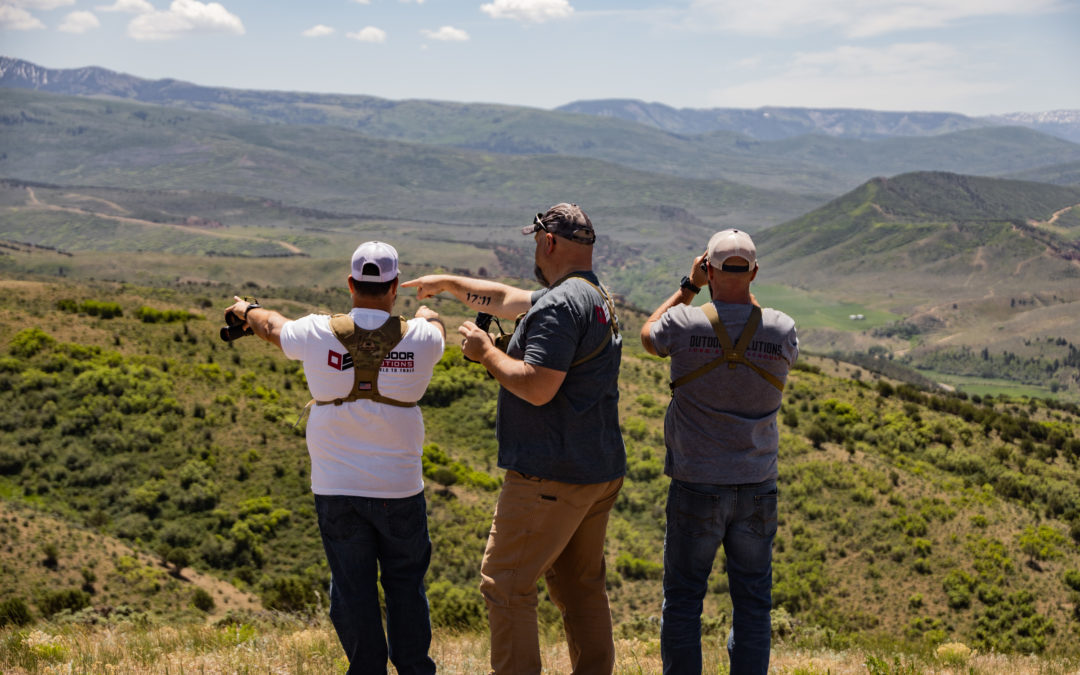Wind Literacy 101: How to Read Wind Direction
Few environmental factors are as important to hunting as how to read wind direction. From where to sit and whence to stalk, or whether a deer walks into your crosshairs or blows out the country, wind plays a vitally important role in a hunt. Most critically, wind can play a huge factor in shot placement, particularly when executing a shot at distance. Learning how to read wind direction, therefore, is of crucial importance. So how does one go about doing this? Read on for some fundamental tips.
Figuring Direction
You’ve doubtless heard old timers say the best way to tell which way the wind is blowing is to wet a finger and stick it up. While I can’t argue with the efficacy, I’ve got news for you. If this method is working for you, the wind is likely strong enough to make it plainly obvious where the wind is coming from–it’s incredibly difficult to determine the direction of a light breeze with a wet finger. It’s far better to watch your surroundings. Trees, grass and other soft flora can give a great indication of what the wind is up to. If you can’t find any of those to use, or if you want an even more certain indicator, carry a small squeeze bottle full of talcum powder into the field. One spritz into the air and you’ll know for sure which way that wind is going. Figuring out direction is only half the battle, however. Once you have a handle on the wind’s direction, you need to figure out its speed.
Going by Feel
Some good general rules for how to read wind direction are these. A wind of 5 mph or less will feel like a light breeze on your face. A wind speed from 5-10 mph will start to blow leaves and such across the ground, and can be heard audibly. Ten to 15 mph and you’ll start to see trunks swaying
Eyeballing It
Want something a little more scientific? Mirage—aka: the heat-induced shimmer you can see through your optic—is another great way to check wind. Take a look through your scope. If you’re shooting on a relatively flat field with a visible sun heating the ground, you should be able to see an accurate mirage. Beware, shooting across hillsides and over brushy foliage can disrupt your mirage, so also rely on your surroundings when figuring direction. If the mirage is telling you the wind is right to left, but you feel/see it going left to right at your position, the mirage is likely being affected by wind funneling around an obstacle.
Nonetheless, it can still be a great way to determine speed. A mirage that boils (the lines go straight up and down) indicates a wind value of zero. A mirage that slants slightly is indicative of a slow wind under 3 mph. A mirage that slants aggressively will indicate a moderate wind between 5 and 8 mph. Finally, a fully horizontal mirage indicates a strong wind between 8 and twelve mph. Any higher, and the mirage will start to blow out, and disappear.
How to Read Wind Direction By Going Scientific
The only foolproof way to determine windspeed is with the use of a wind meter, such as the ubiquitous models from Kestrel Ballistics. Simply orient the meter to the wind, and it will give you an exact reading. Once you have that information, however, what do you do with it? First up is determining whether the wind is a full value (blowing from your 3- or 9-o’clock), quartering (blowing from 1:30, 4:30, 7:30 or 10:30), or dead on (12- or 6-o’clock). For a full value wind, you use the exact ballistic data calculated for your measured windspeed (calculating windages is a topic for another time). For quartering (or roughly quartering) you multiply that value by 50 percent, and for a dead-on, you ignore it entirely. Of course, the intermediary angles technically require different calculations (a half quartering wind would be 25- or 76-percent, for instance, depending on whether it is closer to dead on or full value), but for ethical hunting distances, those three basic calculations will serve you more than adequately.
Isn’t Wind Variable?
A wind meter is all well and good for determining the wind, but what if it’s not consistent? You have two options should this occur. First, you can measure your high and low wind speeds, adjust your hold for one or the other, then wait until wind hits that speed to make your shot. That can be a tricky proposition when dealing with skittish animals however, and you risk missing your quarry.
Wind bracketing may work better for your hunting scenario. Measure the highest and lowest wind value, then average the two and use this as your hold. While not as precise as the former method, it is perfectly adequate at common hunting distances, and will ensure you can squeeze the trigger whenever a shot presents itself, rather than having to wait for the perfect coincidence of sight picture and wind speed.

